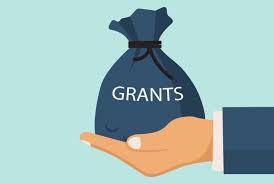You may or may not have heard of the Barefoot Investor but he has become quite popular in recent years with his simple approach to generating long term wealth. This blog is not a recommendation as to the right investment approach for you, but merely provides a summary of a popular view.
The barefoot approach in simple terms is to allocate 60% of your income to live day-to-day on, with the other 40% going towards paying off debt, saving and building your long term wealth. There are three theoretical buckets to split your income. Your income flows through these ‘buckets’, once one fills up, the overflow fills the next one.
The Buckets
- The Blow Bucket: 100% of your income enter the blow bucket which is then spit into four categories:
- Daily expenses: 60% of your income is allocated to your daily expenses bucket. This bucket is as simple as the name implies, dedicated to paying daily/fixed expenses such as rent, food, bills, fuel, and the like; the costs in your life that are unavoidable and constant.
- Splurge: 10% of your income is allocated for you to splurge. The Splurge bucket is used to buy the things you want or want to do, fun purchases, social actives, and nights out.
- Smile: 10% of your income is allocated to your smile bucket. This bucket account is similar to spurge however is used for long term savings goal, bigger purchases such as holidays, a new car, things that make you smile.
- Fire extinguisher: 20% of your income is allocated to fight financial fires, like an existing debt or bigger non- regular bills. Money does not sit in this account. It moves through on its way to paying the bills you have; after debts are paid the money spills over to the Mojo bucket.
- The Mojo bucket
The Mojo bucket is your emergency fund i.e saving for unexpected expenses. The idea is that the Mojo account will replace the need to take on debt or the need for a credit card. It is suggested the Mojo bucket should be a minimum of $2,000 and is considered “full” when there is 3-6 Months of income accumulated in the account.
Once your Mojo Bucket is “full”, the tap is turned off and the excess flows to your Grow Bucket.
- The Grow Bucket
Your Grow bucket is for your long term wealth, this bucket could be used to increase your super fund, long-term savings accounts, shares, currencies or property investments. The important thing to remember here is that this money is for your future.
The goal of The Barefoot Investor approach is to generate long-term wealth while still enjoying a certain level of lifestyle. However, this is just one approach it is important to determine what works for you. You really should read the barefoot book in full as well as other resources so that you have a rounded view. The main thing is to have an approach of some sort.
This blog provides general information that is not personal, financial or investment advice, and does not take into account your personal circumstances. Do not act based on this information without first obtaining the advice of a suitably qualifies and licenced professional.
Author: Georgia Burgess
Email: georgia@faj.com.au







 The main types of contributions to super are concessional and non-concessional.
The main types of contributions to super are concessional and non-concessional.

